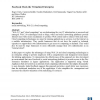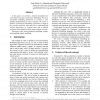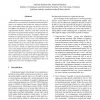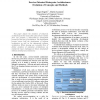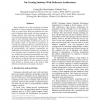EDOC
2008
IEEE
14 years 6 months ago
2008
IEEE
The Zachman Framework offers a classification of the models created in an enterprise architecture project. These models form a holistic representation of the organization. Despite...
EDOC
2008
IEEE
14 years 6 months ago
2008
IEEE
: “Web 2.0” and “cloud computing” are revolutionizing the way IT infrastructure is accessed and managed. Web 2.0 technologies such as blogs, wikis and social networking pla...
EDOC
2008
IEEE
14 years 6 months ago
2008
IEEE
In this paper, we provide a semantic foundation for role-related concepts in Enterprise Modelling. We use a conceptual modelling framework to provide a wellfounded underpinning fo...
EDOC
2008
IEEE
14 years 6 months ago
2008
IEEE
The definition and management of access rules (e.g., to control the access to business documents and business functions) is an important task within any enterprise information sy...
EDOC
2008
IEEE
14 years 6 months ago
2008
IEEE
This paper depicts the evolution of enterprise architectures to their today often used service-oriented form and presents a state-of-the-art development process for this kind of a...
EDOC
2008
IEEE
14 years 6 months ago
2008
IEEE
Service providers as we know them nowadays are the always-on “static” web service providers, that aim at Five9 availability (99.999%). Formal, or de-facto, standards, such as ...
EDOC
2008
IEEE
14 years 6 months ago
2008
IEEE
Business processes used in networked business are often large and complex, which makes them difficult to manage and change. In this paper we address this lack of flexibility by pr...
EDOC
2008
IEEE
14 years 6 months ago
2008
IEEE
Many industries have been developing e-business standards to improve business-to-business interoperability on a mass scale. Most such standards are composed of business data model...
EDOC
2008
IEEE
14 years 6 months ago
2008
IEEE
EDOC
2008
IEEE
14 years 6 months ago
2008
IEEE
Enterprise Architecture is a model-based approach to business-oriented IT management. To promote good IT decision making, an Enterprise Architecture framework needs to explicate w...

